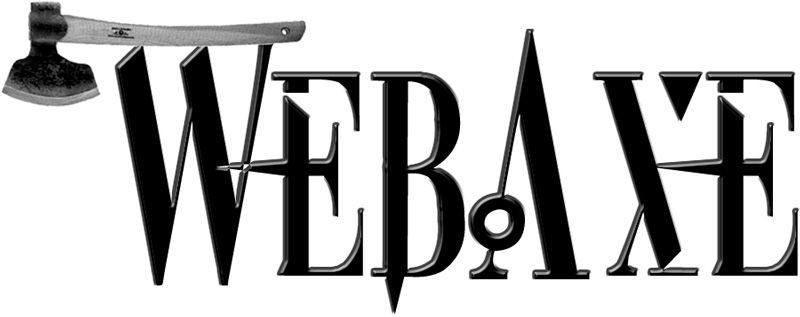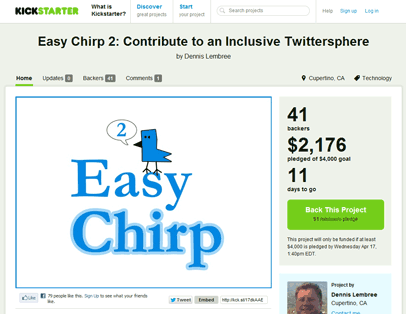As you may know, Easy Chirp is a web-based Twitter client which makes the social media service accessible to all. This includes users with a disability (such as visual impairments and motor impairments), Twitter newbies, older users, low bandwidth, and non-JavaScript browsers.
Like all 3rd party Twitter apps, Easy Chirp gets its data from the Twitter API. Easy Chirp uses API version 1.0 which is being shut down in one month. It must be re-built with version 1.1.
The author of Easy Chirp (who is also the author of Web Axe) created a Kickstarter campaign to acquire minimal funds to rebuild the app with the help of a couple of other developers. At the time of writing, the goal is a little over half-way. Please consider making a pledge on the Easy Chirp 2 Kickstarter and help maintain “an inclusive Twittersphere”. If you’re unable to pledge, please forward this message to those who may be interested.
If the goal of the campaign is not met, there’s a good chance that Easy Chirp will not be updated and Twitter will not be available to those who need it.


